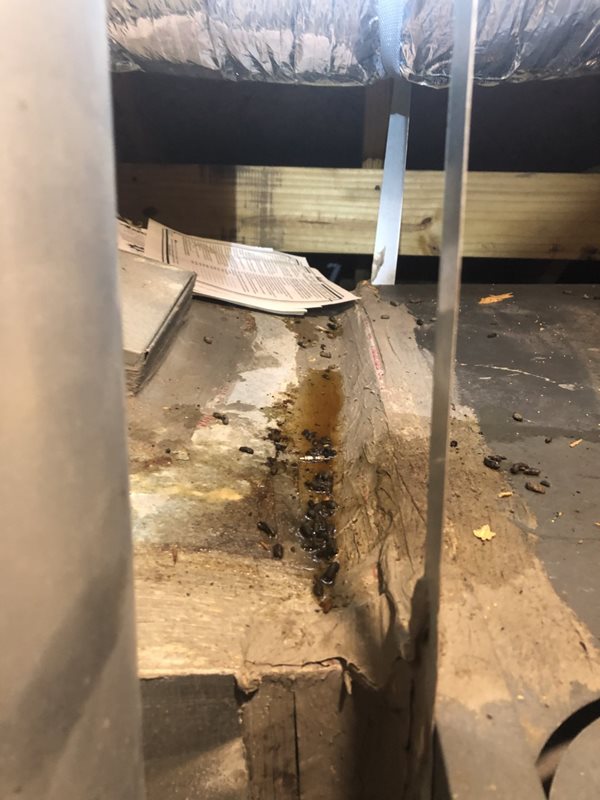Worried about Rat Droppings?
The most recent American Housing Survey, sponsored by the U.S. Housing and Urban Development and implemented by the U.S. Census Bureau, asked residents whether they saw rodent activity in their homes in the 12 months before the survey. Out of the total respondents, an alarming 14.8 million reported seeing rodents, including rats.
So what does this mean for you?
Rats damage the structural integrity of the buildings they infest and threaten the health of nearby individuals, particularly by urinating and defecating excessively. Property owners should always be on the lookout for rat poop in order to catch infestations early and avoid health problems.
What Do Rat Droppings Look Like? How to Recognize Rat Poop
Rats can urinate around .11 fluid ounces and poop up to 50 pellets daily. If you notice objects that look like dirt, rice, beans, or raisins on your countertops, floors, cabinets, under appliances, and along baseboards, those are likely rat droppings. Their droppings will have streaks of urine nearby, which signals to other rats their sexual availability.
The size of droppings can vary depending on the rat species. For example, a Norway rat’s feces can be 24 mm or ¾” to an inch in length. They look like pill capsules but with flat ends. A roof rat’s droppings are smaller, measuring about 12 mm or ½ “long.
Rat feces pellets carry diseases that remain infectious for two to three days. If the feces you see is dark and shiny, it’s fresh. Eventually, it will dry out, fade, and crumble. It is essential to wear gloves and masks when cleaning rat feces and urine since diseases can quickly spread.

Diseases Associated with Rat Poop
What are the health concerns with rat droppings? Diseases, or hantaviruses, associated with rat droppings can range from mild to life-threatening. The following are diseases a human can contract by handling or inhaling the spores of rat feces and urine.
- Leptospirosis
- Weil’s disease, a variation of Leptospirosis
- Toxoplasmosis
- Tularemia
- Rat-bite fever
- Hantavirus pulmonary syndrome
- Salmonellosis
- Rat tapeworm
Symptoms of Diseases Associated with Rat Poop
If you become infected with a disease following contact with rat feces, initial symptoms will feel like the flu. You may have one or multiple symptoms, including fever, chills, achy muscles, headaches, nausea, diarrhea, etc.
Like most diseases, if left untreated, symptoms will progress and worsen. Breathing may become more difficult due to fluid buildup in the lungs and a reduction in oxygen levels. Other symptoms might include low platelet count, low blood pressure, coughing, shock, and rapid heartbeats. Symptoms like these may require hospitalization, depending on their severity. If left untreated, a person may experience lung or kidney failure.
How to Properly Clean Rat Poop
Do not clean up rat poop without proper personal protective equipment (PPE)! Critter Control wildlife technicians wear respirators and gloves to clean up rat poop. Protect yourself with rubber or plastic gloves and a N95 masks.
- Spray disinfectant or a bleach solution and let it soak for a few minutes.
- Use a paper towel or rag to pick up the feces and dispose of it in a zip-lock bag when possible.
- Mop the area with a disinfecting cleaner or bleach solution.
- Wash the gloves with disinfecting or antibacterial soap and warm water, then remove them.
- Wash hands with soap and water.
Keep Rat Poop Out of Your Home
Prevention is the best solution. Keeping rats out of your home means you don’t have to worry about encountering rat feces. Hiring a wildlife control expert is the best way to ensure rats do not invade your home. Technicians, like those at Critter Control, can help homeowners with exclusions, such as:
- Sealing all potential access points to your home with materials a rat cannot chew through. Rats can squeeze through a hole the size of a quarter, so knowing how to find access points is crucial.
- Installing effective storage solutions for garbage, human, and pet foods.
- Removing piles of brush, wood, and rocks around the home’s exterior where rats like to hide.
- Clearing unused items from the yard that rats may find an attractive home.
- Removing bird feeders or food sources rats enjoy.
- Maintaining lawns to avoid the overgrowth that gives rats a great place to hide and travel.
Prevention and exclusion methods will also keep other nuisance wildlife out of your home, like mice, bats, and raccoons, all of which leave feces that can grow mold spores and put you at risk of contracting a disease.
Call one of our technicians today for a detailed inspection and action plan.
Get them out.
Keep them out.®
Experiencing a wildlife or pest issue? We can help! Complete this form and your local Critter Control® office will contact you to assist.
- Baby Rats
- Do Rat Repellents Work?
- Do Rats Hibernate in Winter?
- Dead Rat
- Diseases from Rats
- Rat Bites
- Rat Life Cycle
- Identify Rat Noises Inside Your Home
- Rat Tracks
- Rat Traps & Baits
- Rat Tunnels in Attic
- Rats in Cars
- Rats in Crawl Space
- Rats in Homes
- Rats in Walls
- Types of Rats
- What Can Rats Chew Through
- What Do Rats Eat?
- What Does a Rat Look Like?
- Where Do Rats Nest?
